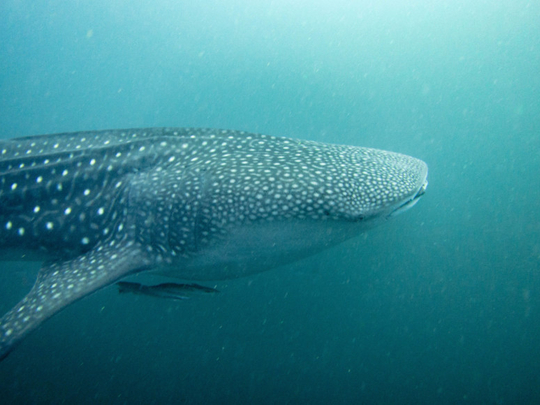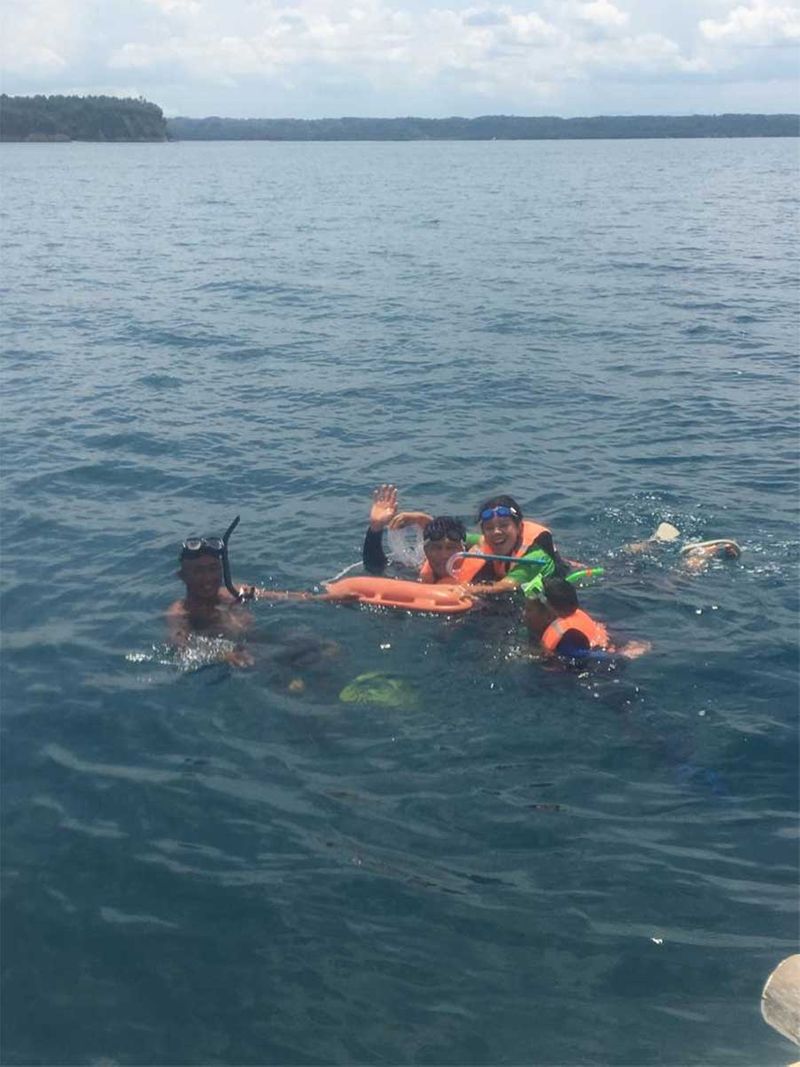
Donsol, Sorsogon: Swimming with whale sharks, the world’s biggest fish, in the open sea is a fascinating encounter.
We had a family rendezvous with the "Butanding" (local term for whale sharks) in this province, in eastern Philippines. Our three boys brimmed with excitement. My wife Tweet, to her credit, jumped in the 50-foot-deep waters off Donsol, too.
Our youngest, Toff (5), reluctant to drift in the open sea, just swam close to the boat.
A day prior, we checked in at Vitton Beach Resort in Donsol — which has a nice pool, restaurant, massage parlour, friendly staff, and is quite affordable.
Tourism centre
The resort is a stone’s throw away from the Butanding tourism centre. The following morning, we woke up to the sound of white outriggers making their way to the shore. They were getting ready to pick up some 80 people who signed up for the day.
We booked our boat, sat for a briefing and grabbed our snorkeling gear.
At around 8.30am, we peeled off from the shore and sailed about 2km, alongside other boats laden with curious visitors.
There were tourists from the Philippines as well as a few from Europe, America, Asia — we took a groupie with "bhaisaabs", too, students visiting from the Indian state of Kerala.
Thrill and fear
The whole thing was a bit more organised. But for us, there were mixed feelings of thrill and fear.
Tonton, 10, was iffy about this whole impromptu expedition. "It's a little scary...I'm not sure if I'm gonna die," he said, moments before we hopped to our diesel engine-powered boat.
We didn't intend to take close-range photos, but waterproofed our phones for quick snaps, just in case.
Whale sharks are quite fascinating: They have colossal, gaping mouths and swim close to the water's surface, scooping tiny plants and animals up — along with any small fish that happen to be around.
Will my family end up being their lunch today?
Our guide, an experienced local boatman, assured us everything will be fine.
Before long, the spotter signalled that our most-awaited moment has come. Our guide shouted "talon!" — Tagalog for "jump!"
The next thing I knew, Tobit and Tonton are already in the water, as our boat slowed down.

There's no record of attacks made by whale sharks on humans.
But there's a long record of human attacks on whale sharks — for meat, fins, oil or for fun — until the 1998, when the Butanding gained national legal protection.
From November till about June, whale sharks draw hordes of tourists to the Philippines, particularly to Donsol, about an hour by plane from Manila, and another hour by car.
Overcrowding is a concern for local tourist officials.
It’s great that the tourism office here had teamed up with the World Wildlife Fund for Nature (WWF) to minimise disruptions to the whale sharks’ ecosystem by organising this human encroachment.
An adult whale shark can weigh up to 60 tonnes, and live up to an average of 70 years in the wild.
Whale sharks prefer warm waters, and populate all tropical seas. They are one of the only three known shark specifies that filter feed.
With a flattened head, a blunt snout above its mouth, it has short barbels protruding from its nostrils.
A whale shark has two dorsal fins, which end in a large dual-lobbed caudal fin (or tail).
Butanding season
During the Butanding season, the sea can get a little crowded. So authorities try and limit the number of boats. Tourists are also limited to 6 persons per boat, following local Coast Guard rules. Those regulations are necessary to make it sustainable and less disruptive.
Tourists are briefed about certain rules to follow, including: “Do not touch the whale sharks”. Feeding the whale sharks is not allowed here, too.
5 kph
average swimming speed of whale sharks (3 mph) — they are a slow and leisurely swimmerWhen my turn to jump came, it was surreal, at first. I thought: "We're invading the whale shark's territory! And why can't I see the bottom of the sea?"
Another lightbulb popped up in my head, as I tried to stay afloat: "I could be gone from here, right now. Without a trace."
Then, our guide screamed: "Tingnan mo sa baba" (Look down). It was almost personal — my first encounter with a Butanding in its natural habitat.
I couldn't resist touching it. Must have been out of child-like wonder. I actually didn't touch it, but it looked huge, and it swam away.
We did this a few times.
We saw several of them, spent about three hours at sea on this excursion — went at least four rounds with our guide and spotter looking, jumping, swimming. Though I used flippers, too, the whale sharks I saw swam really faster than any of us human invaders did.
As we came close to the shore, I explained to our children the horribly damaging effect of dynamite fishing, widely practised in the area until recently.
When we finally hit the shore, I heard Tobit, 11, saying: “This is way better than playing Minecraft at home.”
To which Tonton replied: "Hope we can do this again someday soon."
Donsol is a small town in the Province of Sorsogon on Luzon Island.
There are other places too: Sogod Bay, Southern Leyte, Puerto Princesa, Palawan and Tubbataha Reefs Natural Park.
Recent research has identified more than 942 individual whale sharks in Philippine waters.




